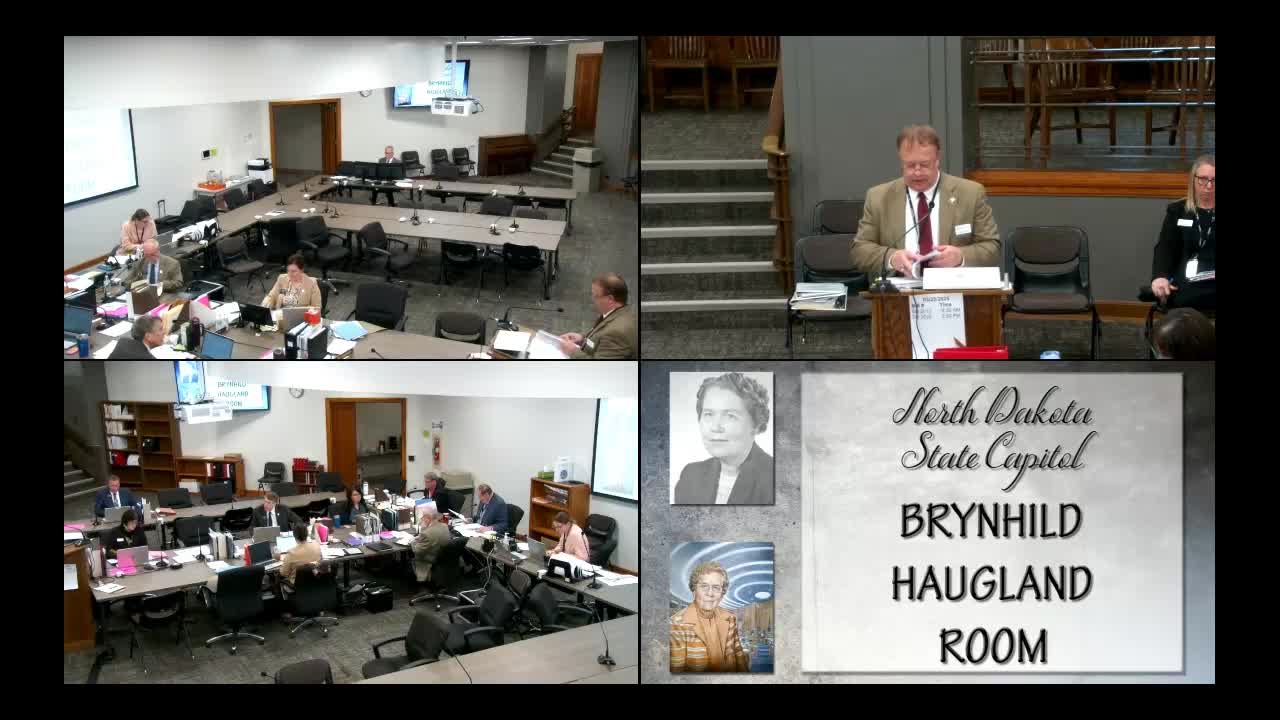North Dakota committee discusses $21M upgrade for state aircraft fleet
March 25, 2025 | Appropriations - Government Operations Division, House of Representatives, Legislative, North Dakota
This article was created by AI summarizing key points discussed. AI makes mistakes, so for full details and context, please refer to the video of the full meeting. Please report any errors so we can fix them. Report an error »

The House Appropriations - Government Operations Division convened on March 25, 2025, to discuss significant updates regarding the state’s aviation operations. The primary focus of the meeting was a proposal to upgrade the current fleet of King Air airplanes, which are models from 1978, and to enhance operational capabilities by adding a fourth pilot.
The discussion began with a presentation on the need to replace the aging aircraft. The proposed amendment includes general funding for the operations of the airplanes, which would allow the state to avoid charging other agencies for flight time. Currently, agencies must reimburse the aviation department at a rate of $1,800 per flight hour for non-highway related purposes. The general funding approach aims to streamline operations and reduce financial barriers for state agencies needing air travel.
A key point raised during the meeting was the requirement for the new aircraft to land on 3,500-foot airstrips, which would accommodate all airports in North Dakota. Concerns were voiced about the capability of larger aircraft to access certain airports, with some representatives expressing mixed feelings about the necessity of upgrading the planes. However, it was clarified that the new aircraft would be selected to ensure operational reliability across varying conditions.
The financial implications of the proposal were also discussed. The estimated cost for the amendment is approximately $21 million, which includes the replacement of the two existing planes and operational costs projected at around $3.6 million. This budget would cover salaries for the additional pilot, fuel, landing fees, and maintenance.
As the meeting progressed, representatives emphasized the importance of further discussions regarding the necessity and costs associated with the aircraft upgrade. The dialogue highlighted the need for a thorough evaluation of the operational requirements and the financial impact on the state budget.
In conclusion, the meeting underscored the ongoing efforts to modernize state aviation resources while balancing operational needs and budgetary constraints. Further discussions and evaluations are expected as the proposal moves forward in the legislative process.
The discussion began with a presentation on the need to replace the aging aircraft. The proposed amendment includes general funding for the operations of the airplanes, which would allow the state to avoid charging other agencies for flight time. Currently, agencies must reimburse the aviation department at a rate of $1,800 per flight hour for non-highway related purposes. The general funding approach aims to streamline operations and reduce financial barriers for state agencies needing air travel.
A key point raised during the meeting was the requirement for the new aircraft to land on 3,500-foot airstrips, which would accommodate all airports in North Dakota. Concerns were voiced about the capability of larger aircraft to access certain airports, with some representatives expressing mixed feelings about the necessity of upgrading the planes. However, it was clarified that the new aircraft would be selected to ensure operational reliability across varying conditions.
The financial implications of the proposal were also discussed. The estimated cost for the amendment is approximately $21 million, which includes the replacement of the two existing planes and operational costs projected at around $3.6 million. This budget would cover salaries for the additional pilot, fuel, landing fees, and maintenance.
As the meeting progressed, representatives emphasized the importance of further discussions regarding the necessity and costs associated with the aircraft upgrade. The dialogue highlighted the need for a thorough evaluation of the operational requirements and the financial impact on the state budget.
In conclusion, the meeting underscored the ongoing efforts to modernize state aviation resources while balancing operational needs and budgetary constraints. Further discussions and evaluations are expected as the proposal moves forward in the legislative process.
View full meeting
This article is based on a recent meeting—watch the full video and explore the complete transcript for deeper insights into the discussion.
View full meeting
